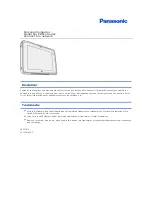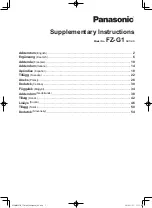
7
Player Portfolio Audio System
| Product Manual
NV-P5200-XX 3-ZONE PLAYER (ETHERNET)
FRONT PANEL
1
2
3
4
Item
Name
Description
1
Standby LED Indicator
Indicates if the player is powered on.
2
Power
Toggles the power on and off.
3
TFT Back-Lit Display
Displays zone names, status, meta data, and networking information.
Touch-capable for setup.
4
Zone 3
USB connection port for adding digital music files to the system music library.
Scans USB hard drive content and automatically adds to the library.
BACK PANEL
4
5
6
1
2
3
Item
Name
Description
1
Speaker Outputs*
Speaker connection ports. Each zone represents an independent output.
2
Line In/Line Out*
Combination 3.5mm stereo line level and mini TOSLINK optical input/output ports.
Each zone represents an independent input/output.
3
Trigger Out
3.5mm output voltage (5 V, 20 mA) trigger for external equipment. Turns on external
amp when audio is present on zone.
4
USB**
USB connection ports for sharing music content from a storage device. Each zone
represents an independent input.
5
Ethernet
RJ45 port for a wired connection to a network router.
6
AC
Universal AC power supply connection port.
* If using a video device as the source for audio output, no perceptible delay in audio occurs when a single player zone is selected. If two or more
player zones are playing the audio from the video source, an audio buffer engages that adds a delay between the audio and video source.
** Not all USB drives are supported natively by the USB port. USB drives should meet USB 2.0 requirements.
NOTE:
Using multiple P5200 units in a single installation will require dedicated power. Please use one dedicated 15 amp circuit for every two P5200’s installed. The P5200
is capable of creating large amounts of output power. When the P5200 is used at high levels of output, it can generate a substantial amount of heat. The P5200 must be
installed in a manner that allows for adequate dissipation of heat. That may include allowing at least one blank space above and below the unit in a rack configuration as
well as forced-air thermal management such as rack-mounted fans. For further guidance on proper thermal management, please see
https://www.middleatlantic.com/








































